Photographs: Reuters
Iraq and Somalia are the most dangerous nations for journalists, according to the Impunity Index published by the Committee to Protect Journalists.
The index includes countries "where journalists are killed regularly and governments fail to solve the crimes".
Rediff.com takes a look at the nations which have found an ignoble mention in the list.
Iraq
As many as 88 journalists have been murdered in Iraq in the last ten years, says the CPJ. The murders continue unabated and Iraq has the dubious distinction of securing the top slot in the index for the third year in a row.
Only seven of the journalists were from international publications; the rest of them were local scribes.
But the committee notes that "For the first time since the United States-led invasion, CPJ documented no work-related murders in Iraq in 2009."
Somalia
Image: Al-Jazeera cameraman Abdinasir Abukar and EPA photographer Ilyas Ahmed in Mogadishu, SomaliaPhotographs: Omar Faruk/Reuters
Stuck in a civil war since years, this ravaged African nation finds itself at the bottom of any list that counts instability, violence, poverty etc as indicators.
Somalia ranks second on the impunity index, as journalists in the country have been targeted by the insurgents as well as the government troops.
Journalists from independent radio stations are the prime targets, says CPJ. Two prominent journalists, Hassan Mayow Hassan and Mukhtar Mohamed Hirabe, were gunned down by insurgents in 2009.
Philippines
Image: Students of the University of Philippines seek an end to the killing of journalistsPhotographs: Cheryl Ravelo/Reuters
While countries like Iraq and Somalia suffer from extreme political instability, Philippines is considered to be a functioning democracy.
However, the horrific massacre of 30 journalists in an attack that was allegedly masterminded by local politicians has catapulted this nation to the third slot.
The Philippines has as many as 55 unsolved murders over the last decade, says CPJ.
"We've heard repeated pledges from governments that the killers of journalists will face justice, but until these promises are fulfilled, the media will continue to be targeted by those who believe they are above the law and immune from consequences," says CPJ's executive director Joel Simon.
Sri Lanka
Image: People pay tribute to slain Sri Lankan newspaper editor Lasantha WickramatungaPhotographs: Buddhika Weerasinghe/Reuters
Sri Lanka has constantly faced flak for its questionable human rights record in the wake of its deadly civil war with the Liberation Tigers of Tamil Eelam.
It has also been criticised for imposing several curbs on the media, regulating the outflow of information and persecuting media personnel.
"Ten journalists have been murdered over the last decade for their coverage of civil war, human rights, politics, military affairs, and corruption. Not a single conviction has been obtained in any of the cases," says CPJ.
The committee points out the horrific murder of editor Lasantha Wickramatunga, who was shot dead in the heart of Colombo. He was known for his strong anti-establishment views.
In an article which he wrote before his death, but published after his murder, Wickramatunga said, "Countless journalists have been harassed, threatened, and killed. It has been my honour to belong to all those categories and now especially the last."
Many Lankan journalists have been forced into exile after they became the favourite targets of the establishment, says the CPJ.
Colombia
Image: Relatives of Colombian journalist Yesid Marulanda, who was shot dead near the university of CaliPhotographs: Juan B/Reuters
Colombia, once notorious as one of the most dangerous places for journalists, has actually improved its ranking over the years.
It has been ranked 5th on the index due to 13 unsolved murders of journalists in the last ten years. But CPJ notes that last year, "prosecutors won convictions against three former public officials charged with plotting the 2003 murder of radio commentator Jose Emeterio Rivas".
Rivas was murdered in 2003 after he exposed the corrupt dealings of the local mayor and other government officials.
Afghanistan
Image: Photographers take pictures of an ISAF team during a drill near KabulPhotographs: Fabrizio Bensch/Reuters
It is one of the most dangerous places on earth. So it is not surprising that the war-torn Afghanistan is not exactly a vacation for journalists caught in the crossfire.
Most journalists killed in other nations were locals covering controversial issues like corruption, security and militancy. But in Afghanistan, the majority of slain journalists were international correspondents. The CPJ points out the cases of "Karen Fischer and Christian Struwe, who were shot near Baghlan in 2006 while doing research for a documentary".
CPJ points out that in most cases, journalists are murdered to send out a strong message to the public -- that their voices will be muzzled if they dare to speak up. The committee's study shows that most journalists are abducted and often tortured before they are killed.
Nepal
Image: Journalists participate in a sit-in protest in KathmanduPhotographs: Deepa Shrestha/Reuters
In Nepal, journalists have been targeted by political parties as well as by Maoist ultras. The country has witnessed extreme political instability due to the weak coalition government at the helm of affairs. Journalists have been asking for more freedom and lesser restrictions, but their demands have gone unheeded so far.
While the government has imposed some unpopular curbs on the media, the Maoists have openly terrorized organisations and publications which dare to write against them.
Six journalists have been killed in the last decade, and the Maoist suspects have managed to elude the law so far. Uma Singh, a young reporter who wrote about Maoist land seizures, was knifed to death in January 2009. Her murderers have not been brought to book, says the CPJ.
Russia
Image: People pay tribute to slain Russian human rights activist Natalya Estemirova in MoscowPhotographs: Sergei Karpukhin/Reuters
Russia has often faced intense pressure from the United States and Western nations to address the rising cases of attacks against journalists. But the government's promises to investigate these cases have turned out to be hollow, says CPJ.
Three journalists were murdered in Russia in 2009, and the government failed to punish the perpetrators. The CPJ says "18 press killings have gone unsolved since 2000".
Independent daily Novaya Gazeta has lost two of its reporters, including respected human rights crusader Natalya Estemirova.
Estemirova was kidnapped in broad daylight, shot dead and her body dumped along the roadside. She was one of the most vocal opponents of the regime of Chechen President Ramzan Kadyrov and many believe that she was killed by elements of the Chechen militia.
Mexico
Image: A friend of journalist Brad Will, who was killed, in front of the Mexican consulatePhotographs: Erin Siegal/Reuters
Levels of violence against journalists is so high in countries like Mexico that editors often practice a policy of self-censorship, says the CPJ. They choose to ignore even vital pieces of news to avoid retaliation and revenge.
With one of the highest rates of organised crime in the world, Mexico has become an even more dangerous place thanks to the powerful crime syndicates and the drug cartel's reign of terror.
Many publications avoid stories about black money and narcotics trafficking to avoid the ire of the drug cartels, who have been involved in fierce clashes with security forces.
CPJ notes, "In Mexico, journalists are too terrified to report the truth about the most important issues that confront the public they are supposed to serve. The word in Spanish for what's happening is autocensura -- self-censorship".
Pakistan
Image: A man holds a placard during a protest against the killing of a journalist in Swat ValleyPhotographs: Ali Imam/Reuters
Pakistan has the dubious distinction of being the spot of the most notorious case in this regard -- the murder of American reporter Daniel Pearl.
The Wall Street Journal reporter was kidnapped in Karachi in 2002 by militants and beheaded nine days later. Ahmed Omar Saeed Sheikh, a British national from Pakistan, was sentenced to death for Pearl's murder by a Lahore court.
Pearl's kidnapping and death had attracted an unprecedented amount of attention from the media and Western nations. Ironically, this is the only case where criminals have been convicted and punished for a journalist's murder in Pakistan in the last decade.
"Twelve other journalist murders have gone unsolved during that time. Two of the murders were reported in 2009, a year in which journalists faced intense pressure from militants and enormous challenges in covering a series of military offensive," says the CPJ.
Musa Khankhel, a Geo TV reporter, was killed hours after he covered a peace march led by a hard-line cleric in the militant-infested Swat. Musa's murder had sent shockwaves through the media in Pakistan and jeopardized a peace deal between the militants and the government.
Bangladesh
Image: An organisation of editors and journalists stages a silent march in DhakaPhotographs: Rafiqur Rahman/Dhaka
Though Bangladesh has been largely peaceful for journalists since 2005, it witnessed a rise in crimes against media personnel between 2001 and 2005, during a period of political instability.
Journalists were targeted for their coverage of crime, corruption and Islamic militancy in the nation. Seven cases of journalists' murders in this period have remained unsolved.
The most shocking case was the murder of Gautam Das, a Dhaka-based reporter, who was strangled in his office.
"Das was known for his reporting on crime and corruption, including coverage of illegal activities by members of the ruling Bangladesh Nationalist Party. Das had recently written about local government officials accused of taking bribes in exchange for construction contract awards," says the CPJ.
While many people, including a politician's son, were arrested for the murder, nobody has been convicted so far.
India
Image: A Kashmiri protester throws stones towards policemen as foreign photographers take picturesPhotographs: Danish Ismail/Reuters
India finds itself at the bottom of the list, after its neighbours Bangladesh and Pakistan.
CPJ notes that "impunity in media killings is acute in South Asia. Six nations in the region -- Sri Lanka, Afghanistan, Nepal, Bangladesh, Pakistan, and India -- are included on the 2010 list."
The largest democracy in the world prides itself for granting absolute freedom to the press. But as many as seven journalists have been murdered in the last decade in India and their murderers have gone scot-free.
Journalists in India are also targeted for covering the same contentious issues -- crime, corruption and human rights violations.
Cases of powerful elements threatening local journalists are rampant and police investigations are perfunctory at best, says the CPJ.
The committee mentions the murder of Vikas Ranjan, a correspondent for Hindustan, who was shot dead in Bihar. Ranjan had reportedly received several threats for his courageous writing. The police have failed to find his murderers.

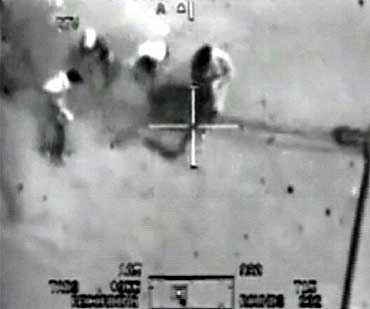
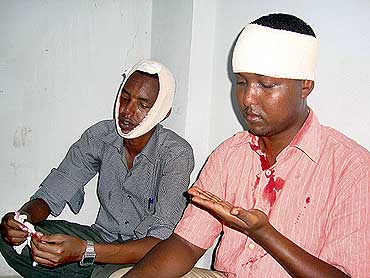
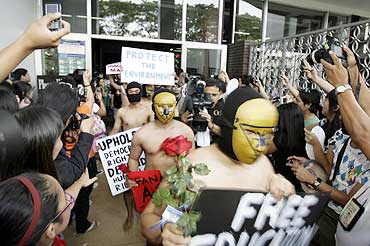

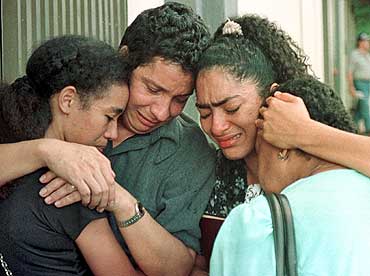
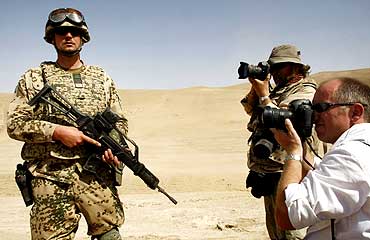
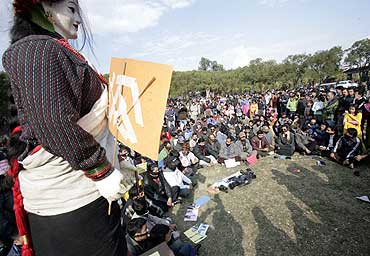
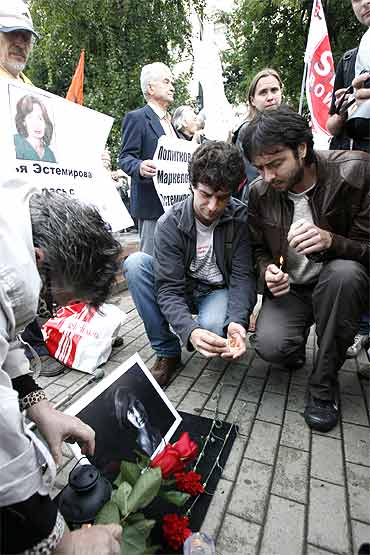
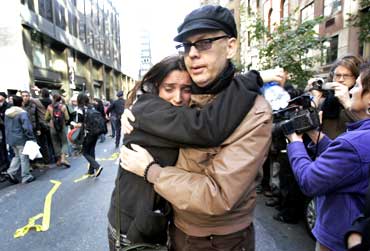
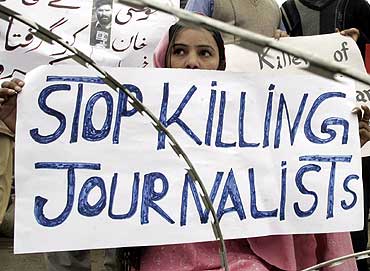

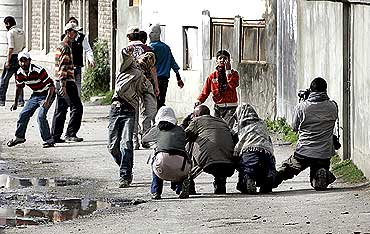
article